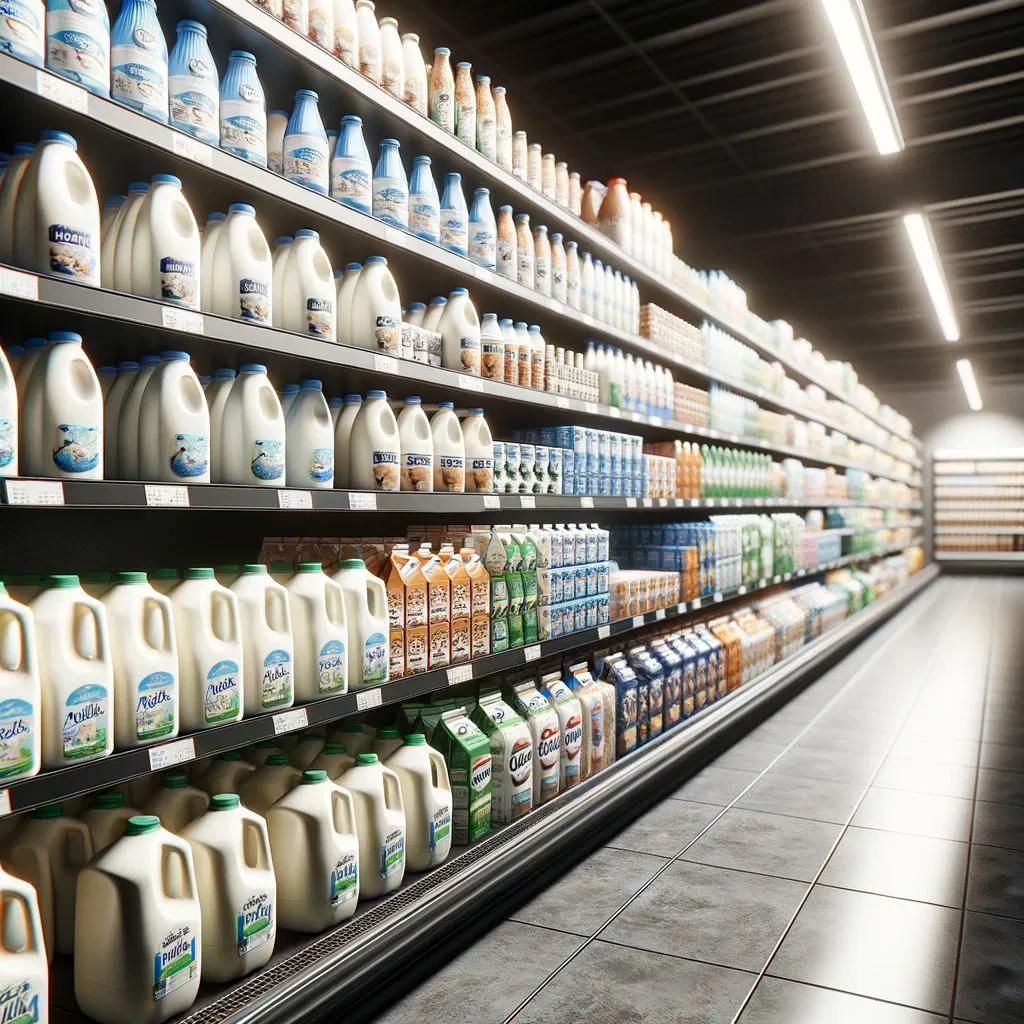
Have you ever wandered why when you go to the grocery store, you often find yourself heading to the farthest reaches of the store to grab a gallon of milk? This isn’t just a coincidence—it’s a carefully designed strategy by retailers.
Consumer Behavior and Store Layout
Firstly, milk is a staple item that most shoppers intend to buy, and placing it at the back ensures that customers have to walk through a variety of other items to reach it. This encourages impulse buying as shoppers are exposed to a plethora of goods they might not have otherwise considered purchasing. The longer the route, the more opportunities the store has to entice shoppers with products.
Secondly, placing milk—a highly perishable product—in the back, helps stores to better manage the cold chain logistics. It minimizes the time the product is out of a refrigerated environment during restocking. Close proximity to storage areas and ease of access for employees to replenish these high-demand products without causing disruptions in the main shopping areas plays a crucial role.
In addition, grocery stores are configured to encourage a specific traffic flow. Retailers often layout their stores to create a particular path they want their customers to follow. By strategically placing popular, essential items like milk at the back, stores influence traffic patterns within the premises, exposing customers to as much of their product range as possible.
Economic Strategy and Marketing

One of the most significant factors behind placing milk at the back is to increase the chances of additional sales. When customers pass by various product aisles, the store’s chance of selling more items per visit grows. This practice is part of a retail strategy called the ‘Boomerang Effect’, where essential items are placed far apart so that customers must traverse the store and get exposed to the maximum number of products.
At the same time, the specific placement of milk and other dairy products allows retailers to create distinct zones within the store. These zones are usually associated with complementary products, often leading consumers to pick up related items that enhance the store’s sales volume.
Retailers also design these layouts based on in-depth market research to determine shopping habits and patterns. By analyzing the data, they can organize the store layout in a way that maximizes profitability while also streamlining the shopping experience for greater customer satisfaction.
Psychological Aspects
The strategy taps into the psychological aspects of shopping as well. People are creatures of habit, and once they get used to a specific store layout, they’re more likely to follow a routine pattern. Keeping milk in a consistent spot ensures that customers feel comfortable in their shopping environment and can find this staple item without too much confusion.
Finally, the back-of-store placement also takes advantage of the psychology of ‘just one more item’. As consumers approach the end of their shopping list, they often feel a sense of accomplishment, which can lead to a reward mentality. This mindset makes them more susceptible to add further products to their cart before they leave the store — with milk being one of the last stops.




















